BREED HISTORY
The Lowchen was once the cherished companion of nobility as far back as the 15th century. We know this to be true as you can see pictures of these little dogs in some of Albrect Durer’s wood carvings.
.
The dogs are readily identified in European artworks, stylized and clipped to resemble a miniature lion.
The earliest recorded name of this breed is actually the Maltese Lion Dog and it kept this name until the French naturalist, Buffon renamed it Bichon Petit Chien Lion (Little Lion Dog) and the French have since claimed country of Origin status. Other names the breed has gone by are Schoshundle, Gutchen Hund and today’s name Lowchen, (baby lion in German).
While the breed has evidently existed in Europe for many years, for reasons unknown it became very rare.
At the turn of the century Breeder exhibitor Maximillian de Coninck of Belgium had a very important client, Madame Bennert. The breed was already in decline and thanks to Madame Bennerts lifetime love affair with the breed, they are still with us today.
At the end of World War II Madame Bennert realized there were no Lowchen being bred or registered. She resolved to save the breed as so many others breeds had disappeared after those dark time.
In Madame’s own words “After a long and disappointing search I finally found two wonderful females; one was blue and came from (the town of ) Lile and the other was biscuit coloured and came from the area of Dieghem. After a long search, I finally found a blue male and this was the beginning of my small kennel.”
From her hands the breed passed on to German veterinarian Dr. Hans Rickert. It was from Von den Drei (VD3 Lowen) that Lowchen slowly began to spread worldwide and all Lowchen living today can trace their roots to his dogs.
There are many romantic stories as to why the coat was clipped into the lion pattern. One such logical story is that the breed was used as a hot water bottle. Shaving part of the body gives ready access to a naturally warm surface. I have not met a Lowchen yet that did not like sleeping in the bed and crawling under the covers with it’s master.
Another story is that a carving of a Lowchen would be placed at the foot of a knights tomb if he died peacefully. If the knight died in war, then a carving of a lion was used to signify the knights valor.
In the late 1960’s the Lowchen was listed in the Guinness Book of Records as the rarest breed.
The first Lowchen imported to Great Britain was in 1968. In 1971 three Lowchen were imported into the United States and in 1976 they were imported into Canada and Australia. The breed was officially recognized in Canada in 1995.
A degree of popularity arrived for the Lowchen when an American television showed came out called Hart to Hart featuring an unclipped Lowchen known as Freeway.
While many people prefer the breed to be unclipped, the breed club decided to keep up the 2000 year old tradition keeping the lion trim.
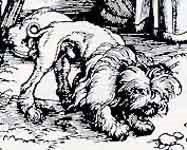
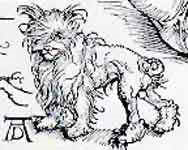
details of lowchens in Albrect Durer's wood carvings
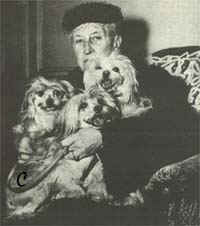
Madame Bennert with her Lowchen
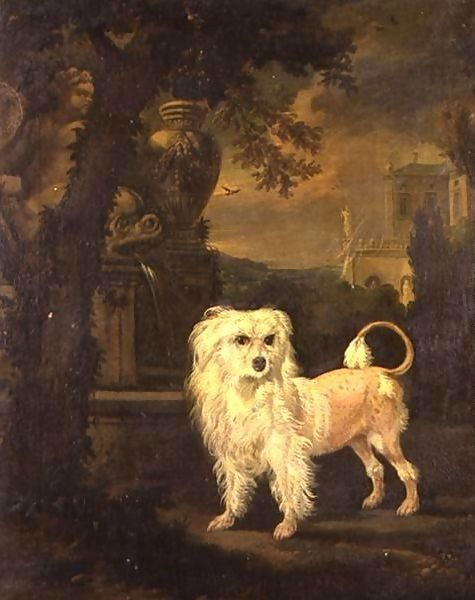
"A Lowchen By A Fountain," oil painting by Jan Wyck, a Dutch Baroque Era Painter, portrays the lowchen in its traditional lion clip.
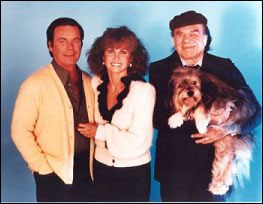
Freeway with the cast of Hart to Hart.